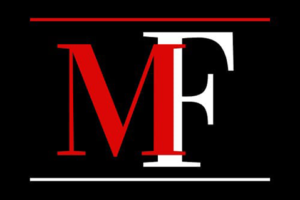Banks today compete not just on interest rates or branch networks, but on how well they manage customer relationships. One of the most effective ways to do this is through product bundling, which offers multiple financial products together as a package.
Product bundling strategy helps banks deepen customer relationships, boost profitability, and improve customer retention.
This article explains what is product bundling in banking, how it works, and what the latest research says about its benefits, risks, and future trends.
Key Takeaways
- Product bundling helps banks increase revenue, customer retention, and reduce costs efficiently.
- Three main bundling strategies exist: pure, mixed, and tie-in (contingent) bundles.
- Bundled customers stay longer, use more services, and significantly boost bank profitability.
- Ethical and regulatory rules require transparency and freedom of choice in bundled offerings.
- Future trends focus on convenience, security, and personalized bundles, with FinTechs favoring specialization.
What is Product Bundling in Banking?
In banking, product bundling means offering two or more financial products or services together as one package.
For instance, a bank might give you a deal that includes a checking account, savings account, credit card, and insurance policy; all in one combined offer.
The main goal is to make banking more convenient for customers and to encourage them to use more services from the same bank.
Why Product Bundling Matters in Banking?
Banks use bundling because it helps them:
- Increase revenue: Selling multiple products to one customer brings in more income.
- Keep customers longer: People who use several products from the same bank are less likely to switch to another bank.
- Reduce costs: It is cheaper to offer new products to existing customers than to find new ones.
Types of Product Bundling in Banking
There are three main types of product bundling in banking sector.
1. Pure Bundling
In this approach, the products are only available as part of a package.
Example: A “premium banking package” that includes a debit card, credit card, and financial advisory services for one fixed monthly fee.
2. Mixed Bundling
Here, customers can choose to buy each product individually or as part of a bundle at a discounted price.
Example: You can open just a checking account or get a special deal if you combine it with a personal loan and a credit card.
3. Tie-In (or Contingent) Bundling
In this case, getting one product requires buying another.
Example: A bank might approve a loan only if the customer also opens a current account with them.
How Bundling Affects Bank Performance
Research shows that bundling, when done well, can greatly boost a bank’s key performance indicators (KPIs).
Customer Retention and Loyalty
- Customers with only one product usually stay for around 1.5 years. Those with two products stay about 4 years, and with three, about 6.8 years.
- Banks that increase the number of customers with four or more products can double their profitability.
Revenue and Profitability
- Cross-selling and bundling can raise revenue by 10%–50%.Return on equity (a measure of profitability) also increases.
- In one study, introducing bundled offers led to a 60% rise in sales, even without heavy advertising.
Product Bundling in Banking Example—North Carolina Bank
Product bundling, a strategy widely used in industries like cable television, involves offering multiple related services together to enhance value and convenience. This concept has been effectively adapted to the banking sector to boost revenue and customer satisfaction.
David Crumpler, Vice President and Director of Marketing at East Carolina Bank, introduced the “My Security Bundle”, which combines a checking account with identity theft alerts, credit score reports, and cyber-protection services.
According to a Market Rates Insight national study, 82.5% of customers expressed interest in identity theft alerts, and 73.7% wanted credit score report services, showing strong demand for such bundled financial products.
Results and Impact
After launching the bundled services on March 1, East Carolina Bank experienced a 60% increase in bundled account sales with minimal advertising. The initiative successfully increased fee income, attracted new customers, and enhanced customer experience.
Outcome
This case demonstrates that product bundling in banking is a profitable strategy that drives customer engagement, cross-selling, and revenue growth. It shows that what works in other industries can also succeed in financial services.
Regulatory and Ethical Issues
Product bundling in banking sector has proved to be a handy selling technique, but it faces ethical and regulatory challenges as well. Here are a few examples.
a. EU and Ireland
Banks in the EU and Ireland are prohibited from forcing customers to buy one product to access another unless it clearly benefits the customer. This rule ensures transparency and prevents exploitative sales tactics. (Central Bank of Ireland, 2013)
b. Indonesia (OJK)
The Financial Services Authority (OJK) allows product bundling only if customers are given full freedom to choose and receive complete, clear information about each product. This protects consumers from misleading or coercive offers. (OJK Regulation, 2013)
c. Tanzania
In Tanzania, bundling practices that reduce consumer choice or mislead customers are considered unfair business practices. Regulators can take action against banks engaging in such restrictive bundling. (Mondaq, 2020)
Future of Product Bundling in Banking and Fintech
The Currencycloud “Elastic Bundling in Financial Services” report surveyed over 9,000 consumers and 504 businesses across nine countries to analyze global trends in financial product bundling. It found that 95% of financial firms see no disadvantages to bundling, and 88% view themselves as one-stop shops, though only 47% of consumers prefer this model.
Traditional banks are more likely than FinTechs to claim one-stop-shop status, while FinTechs are more focused on specialization. The study revealed that convenience, integration, and security are top benefits for consumers, with 97% valuing increased protection from fraud. However, price, security, and ease of use still outweigh bundling itself as key drivers in consumer decisions.
